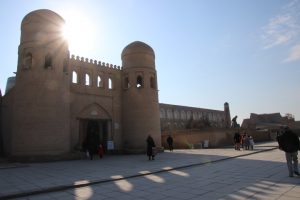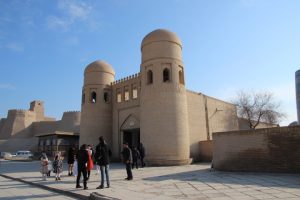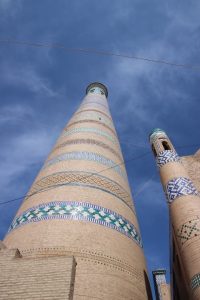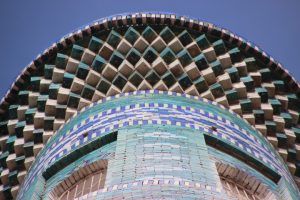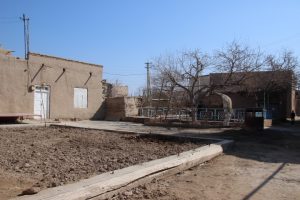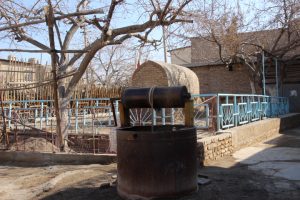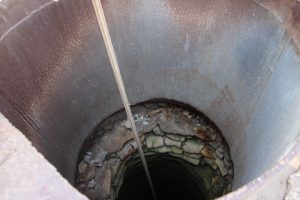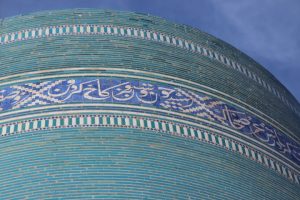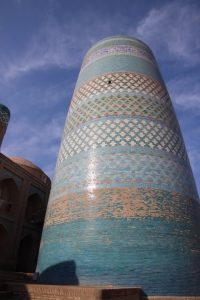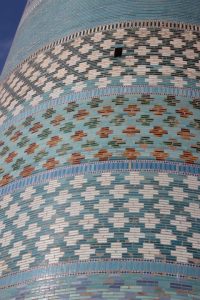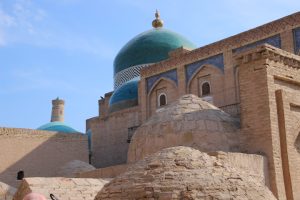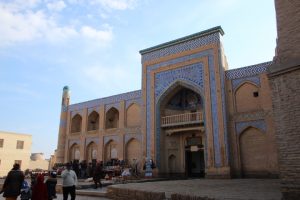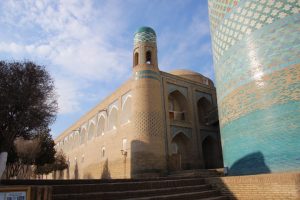Today we are based in Khiva at a hotel across the road from the west gate of a most amazing mud brick-walled city. It has colourful domes and minarets which today were piercing the brilliant blue sky.
Legend has it that Khiva was founded when Shem, the son of Noah, discovered a well here and it became known as Kheivak from which today’s name is said to originate. Our explorations took us to the site of the original well in the courtyard of an 18th century house with a small white door in a mud wall. Unfortunately we could not gain access but to support this theory in the courtyard of the neighbouring house was a working well! This has to be the origin of the settlement. It is historical continuity in action.
Khiva, archaeologists have found, certainly existed in the 8th century as a fort and trading post on the Silk Road but the Khorezm route continued to dominate the area until the 14th century when the rulers of old Urgench were defeated by Timur (more about him later) and Khiva became the dominant settlement. The city acted as a trading centre, an overnight service point for the camel caravans and had a busy slave market as people were traded by Turkmen tribesmen from both the Karakum Desert or the Kazakh tribes from the Steppes. In 1740 Khiva was destroyed by the Shah of Persia but rebuilt in the 18th century and continued to trade as the largest slave market in central Asia until 1873 when Russian forces ousted the rulers. The historic centre fell into ruin but fortunately with Unesco support it has been restored as a museum city. To walk through the walls and catch that first glimpse of mud brick walls and colourful minarets along with the twisting alleyways is certainly magical. We toured the old city for 5 hours and never saw any Europeans. An extra magic moment was yesterday at about 8:00pm when looking for a restaurant we entered the old city. There was almost total darkness punctuated by an illuminated minaret and an amazing star-filled sky.
